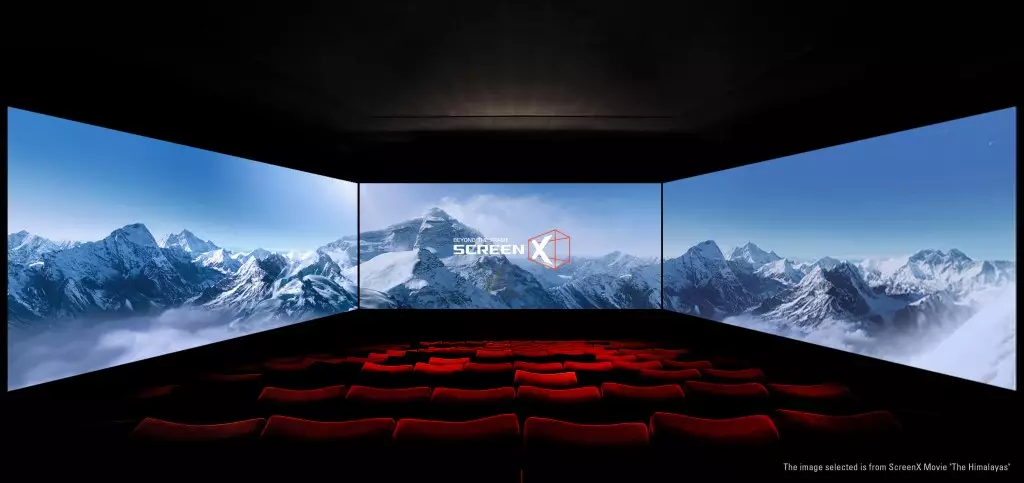In a world still grappling with the repercussions of the pandemic, the partnership between CJ 4DPLEX and Cinépolis stands as a bold declaration of intent in the film industry, showing that traditional cinema isn’t just resilient—it’s evolving. The recent agreement to launch or upgrade 50 cinemas in 18 countries, largely across Mexico and Latin America, delves into the crux of what cinema could and should be. With 30 new ScreenX auditoriums set to transform how audiences enjoy films, this initiative prompts a critical examination of our relationship with cinema and tech’s role in shaping that experience.
The statistics are indeed impressive: CJ 4DPLEX, the leader in premium film formats, currently operates nearly 1,300 locations globally. This proliferation indicates a fundamental shift in viewer expectations. As theaters recover from the pandemic’s grip, it’s clear that new experiences must coax audiences away from the comfort of their homes. Premium cinema tickets are no longer just luxury options but essential tools in a post-pandemic reconciliation with public spaces and community experiences.
Next-Level Experiences: Is it Worth it?
The technological marvels offered with ScreenX and 4DX—breathtaking 270-degree visuals and immersive multisensory effects—do raise the bar significantly. However, skepticism lingers: while this may be an entertaining gimmick for some, is it a genuine enhancement to the storytelling quality of films? The real concern is whether the emphasis on such sensory stimulation overshadows the artistic integrity of filmmaking itself. As these formats focus more on engagement through technology, do filmmakers risk losing the subtle art of narrative that calls for emotional connection over mere spectacle?
There’s a fine line between enhancing an audience’s experience and catering to fleeting attention spans. Prioritizing breathtaking visuals and multisensory input can lead cinema down a path where we celebrate the event of watching a film rather than the film itself. With big titles such as Warner Bros.’ “F1” and Marvel’s upcoming “Fantastic Four: First Steps” already slated for release in these innovative formats, one has to wonder if the actual content will suffer in the race to produce jaw-dropping experiences.
Franchise Fantasies: Monopoly or Opportunity?
The unmistakable trend towards blockbuster franchises, which are often designed with these formats in mind, raises another critical issue. The consolidation of power within the film industry has led to a scenario where niche, original storytelling may be sidelined in favor of familiar narratives destined for massive box office returns. The love for cinema’s art form risks being overshadowed by a reliance on nostalgia and brand recognition.
Cinépolis, as the third-largest exhibitor worldwide, clearly commits to pioneering this cinematic evolution by offering dynamic and immersive experiences, a move that some may view as monopolistic. It raises the question: are audiences inadvertently surrendering their film-going freedoms to a system that celebrates profit over artistic merit? This partnership certainly welcomes innovation but teeters dangerously close to suffocating the diversity of stories in favor of creating market-dominant spectacles.
Corporate Collaboration: Innovation or Commercialism?
The burgeoning relationship between CJ 4DPLEX and Cinépolis, while rooted in collaboration, also underscores a growing corporate influence on artistic expression. As businesses wield more than just financial might—they shape culture—the future of cinema might be dictated by boardroom priorities rather than creative vision. With comments from CJ 4DPLEX’s CEO Jun Bang highlighting the adventurous spirit of Cinépolis in pushing “bold and exciting concepts,” one must reflect on the costs of such collaboration. When innovation becomes synonymous with commercialization, the core purpose of cinema as an art form may be diluted.
Cinematic spaces designed for such advanced technologies might attract an eager audience, but at what cost to those looking to foster a deeper emotional connection through conventional filmic experiences? The journey of evolution necessitates balance; it cannot disregard the art that has defined this medium since its inception.
In a market infused with the potential for powerful engagement and revolutionary viewing experiences, the imperative to safeguard artistic integrity remains paramount. As we witness this changing landscape unfold, it is crucial to remain vigilant about what the future holds for cinema and the stories that deserve to be told within it.

